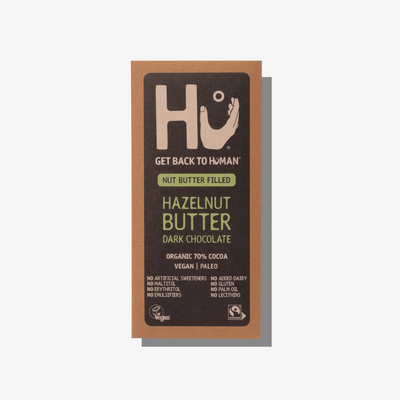During menopause, guidance for exercise can be confusing and sometimes conflicting, but in my years of experience, I've come to appreciate that with any kind of movement, we need to get enjoyment from it, otherwise, it becomes a chore that we hate. If we don’t enjoy what we’re doing we are going to revert back to old habits. So, it’s important to find your thing.

Nutritional Therapist Claire Foss is the founder of FOSS Nutrition. Specialising in women's health using her 4 key pillars - Food, Offline, Sleep and Stress, Claire often works with clients who are already taking HRT but are still struggling with menopausal symptoms such as crippling an
Within my exercise arsenal, I have a variety of activities, but my absolute favourite thing to do is run!
It provides me with steady cardio (I’m a bit of a plodder), morning light (as I usually run first thing), and of course endorphins (the feel-good hormones). I run outside in all weathers, but I prefer winter running and I've run for many years now. I don't run long distances in fact, I average between 3 to 6 kilometers depending on how much time I've got and what I've got planned for the day, but I generally head out after the youngest has been dropped at school. It’s easier to stay on track if you make time for exercise and it features as part of your daily routine.
Also, note when your energy is at its highest as that helps keep in the exercise groove, my energy is better in the morning, so I need to utilise that.
I also enjoy open water swimming at a local lake, walking with my two gorgeous rescue Spanish spaniels (Puchi and Amigo), yoga, ‘bounce’ – which is an exercise class on mini trampolines, and I've got weights and a pull-up bar at home, and I have recently joined a gym.
As with most things in life we need to mix our exercise routines up to keep them fresh and exciting and more recently I’m being drawn to calisthenics. Obtaining and maintaining muscle mass is essential during and after menopause and it is going to become a primary focus for me going forward.
Of course, any exercise routine needs to be supported with good nutrition, especially during the menopause years. It is true, that you cannot out-train a bad diet and it becomes even harder during midlife because we can also be up against a slowing metabolism (muscle mass helps to improve this) and insulin resistance - which I touched on with my recent post with healf too here.
THREE Simple Nutrition Tips

Protein
Number one is ensuring that you have adequate amounts of protein per day – a rough guide is 1.0 to 1.2g per kg of body weight. Protein = meat, fish, eggs, cottage cheese, tofu, good quality protein powder.
Protein is an essential nutrient and is found in every cell of our body. It has numerous roles such as repairing and maintaining body tissue, supporting our immune system, and helping produce hormones and enzymes. Oestrogen plays a role in maintaining bone density and muscle mass, so as oestrogen declines during and after menopause it puts us at risk of osteoporosis and sarcopenia.
Food cravings and appetite changes are significant in perimenopause, which makes it harder to maintain a healthy diet. Protein can help with this as it increases feelings of fullness and reduces hunger.
Consider Your Carbs
Swap out starchy carbohydrates for vegetables and salad. From around the age of 40, our metabolism starts to change, and we become less efficient at processing the glucose from starchy carbohydrates such as porridge, breakfast cereals, muesli, bread, pasta, bagels, rice, biscuits, and cakes. Meaning, we need to tweak the way we eat.
Swap out porridge and muesli at breakfast for eggs or Greek yogurt, ditch the lunchtime sarnie for a salad, and pump up the protein with some salmon, eggs, or turkey. Dinner time introduces smart swaps such as cauliflower mash or rice, courgetti, or butternut squash noodles to enjoy with your usual meals. Easy Peasy!
Ultra-processed Food
Unfortunately, lots of foods, including bread in our supermarkets are now considered ultra-processed due to the amount of ingredients and nasties contained within them. During menopause, internally our bodies are under massive stress, so it makes sense to avoid these foods at all costs. Stick with the two tips above and you’ve pretty much removed them without even trying!
Of course, with all that exercise and focus on food we also need space and time to kick back and relax our muscles, mind, body, and soul and I’m a big fan of Ancient + Brave - Cacao + collagen powder.
Ancient + Brave cacao + collagen is a cosy hot chocolate through the winter months or a chilled milkshake in the summer. It's of course full of the good stuff – grass-fed collagen (helps support skin, muscles, bones, and connective tissues), raw cacao (antioxidant and anti-inflammatory), cinnamon (supports blood sugar levels), ashwagandha (has a calming effect), and pink salt (bursting with minerals). I went to a cacao ceremony last year, that was an experience – you should try it!
The Bathing Beauty Salt Trio are Epson salts (magnesium sulphate) that will help ease your hard-worked muscles. Check out ‘Jones the Bones’ salts if you also have achy joints (which are common in menopause) this blend was created by osteopaths. Of course, magnesium also comes with sleep benefits so should ease you into a delicious soporific state if you bathe before bed.
















